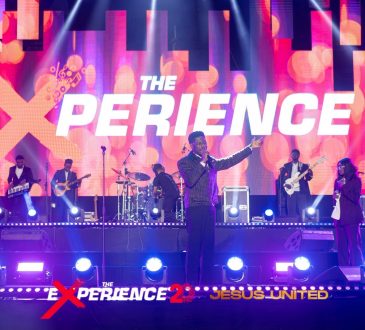The Rise of the ‘Nones’ Stalls: Why America’s Spiritually Disconnected Are Facing Higher Stress and Lower Hope

For decades, the number of Americans who identify with no religious affiliation—the so-called “nones”—has been rising at an astonishing rate. But according to the latest State of the Bible report by the American Bible Society, that growth has hit a plateau. In 2024, the percentage of Americans identifying as nones stands at 26%, the same as in 2023 and 2022. This marks the first time in recent history that this demographic group has stopped expanding, leaving many to wonder: What’s next for the nones, and why are they feeling so stressed and hopeless?

Who Are the ‘Nones’?
The term “nones” refers to individuals who, when asked about their religious affiliation, check “none of the above.” Some of them are atheists or agnostics, but many simply do not identify with organized religion despite maintaining personal spiritual beliefs. Historically, nones have been on a steady climb, jumping from 5% in the 1970s to 12% by the mid-1990s, and crossing the 20% threshold just over a decade ago.
While this group is often seen as a challenge to the influence of religion in American life, the new report reveals that 26% of Americans now claim no religious affiliation—a figure unchanged for the last three years. This raises a key question: Has the movement away from religion in the U.S. reached its peak?
Understanding the Surge and Plateau
The rapid rise of the nones over the last 50 years has been attributed to various cultural shifts. Social scientists have pointed to factors like growing secularism, increased education, and the erosion of traditional religious institutions. According to the report, there’s also what experts call a “social desirability bias.” In previous generations, it was more socially acceptable to claim religious affiliation, even for those who didn’t practice or believe. Today, that stigma has largely disappeared, allowing more people to openly identify as nonreligious. However, that bias can only explain a fraction of the surge.
With the percentage of nones now holding steady, some researchers are curious if this is the beginning of a long-term stabilization. Is it possible that the proportion of nones has reached a natural limit, or will we see another uptick as younger generations continue to move away from organized religion?

Stressed and Hopeless: The Emotional Cost of Disaffiliation
While nones may be free from religious constraints, they are paying an emotional toll. The report highlights an alarming trend: nones consistently self-report higher levels of stress and lower levels of hope compared to those who identify with a faith. Despite often being better educated and better paid than their religious counterparts, this demographic faces a psychological burden that many find surprising.
Why the disparity? Experts believe that a lack of community and spiritual guidance could be playing a role. For many Americans, religion provides a built-in support system and a sense of purpose. Nones, by contrast, are more likely to feel isolated, especially in moments of personal crisis or uncertainty. Without religious rituals and networks to fall back on, they may find themselves navigating life’s challenges with fewer resources.
A Demographic Profile of the Nones
So, who are these nones? According to the State of the Bible report, nones are more likely to be male, young, urban dwellers. They tend to be unmarried, which may further contribute to their sense of isolation, as marriage and family life often offer additional layers of emotional and social support. Interestingly, nones are also more likely to be better educated and earn higher salaries than their religious peers, but this does not necessarily translate to higher emotional well-being.
While the nones may be intellectually curious, with 25% expressing an interest in the Bible or Jesus, the majority remain either indifferent or hostile to organized religion. In fact, 40% of nones report a negative attitude toward the Bible, with many associating it with outdated or oppressive systems. Only 1 in 10 claim to have a personal relationship with Jesus, making them a significant and diverse population that poses both a challenge and an opportunity for faith communities.
The Vast Mission Field
Despite these trends, the report concludes with a message of hope for religious organizations. John Plake, the chief innovation officer for the American Bible Society, sees the nones as a “vast mission field.” Rather than viewing this group as adversarial to religion, Plake suggests that many nones are in a “liminal place”—caught between rejecting organized religion and being open to spiritual exploration.
“One of the things that we think is really useful in ministering to people with no religious affiliation is just to recognize that they’re not against you,” Plake explained. “They’re in this place in between.”
This “place in between” presents a unique opportunity for religious leaders to reach out to those who are searching for meaning in an increasingly fragmented world. Many nones, while critical of organized religion, remain spiritually curious and open to engaging in conversations about faith—provided it’s done in a respectful and meaningful way.

What’s Next for America’s Nones?
As the percentage of nones stabilizes, their future role in American society remains uncertain. Will the plateau last, or will another cultural shift push the number higher? More importantly, how will religious communities respond to this growing group of spiritually detached individuals? While the nones may not fit the traditional mold of faith adherents, they represent a critical opportunity for the church to engage a group that is searching for hope in all the wrong places.
For now, the nones remain a key demographic, influencing everything from public policy to cultural attitudes about religion. Their rise has transformed the religious landscape of the U.S., but their emotional struggles remind us that spiritual detachment comes at a cost. With 25% still curious about the Bible and Jesus, the door remains open for meaningful dialogue—if faith communities are willing to listen.




